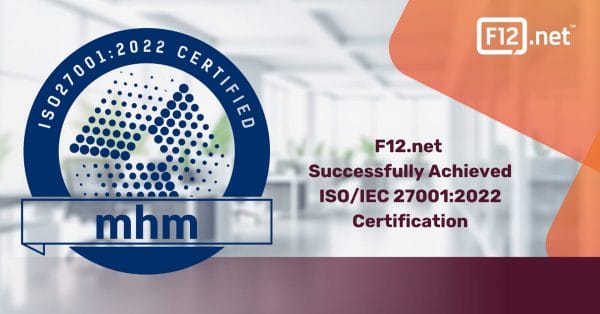Brief: On October 14, 2025, Microsoft will officially end support for Windows 10. That means no more security updates, compliance protections, or technical support. Businesses that fail to upgrade in time will face growing cyber risks, operational disruptions, and rising costs. Yet, most IT providers aren’t talking about it leaving businesses unprepared. The companies that plan now will transition seamlessly. Those that wait? They’ll be scrambling for last-minute fixes at premium costs.
“There are only two types of companies: those that have been hacked, and those that will be.” – Robert Mueller, Former FBI Director
Understanding the Risks and How to Transition to Windows 11
Microsoft is pulling the plug on Windows 10. On October 14, 2025, businesses that haven’t migrated will face:
- Security risks—no more updates, making every unpatched device an easy target.
- Compliance gaps—regulatory violations for industries that require supported software.
- Operational disruptions—software vendors will stop optimizing applications for Windows 10.
This isn’t just an IT issue—it’s a business risk. The companies that plan now will transition seamlessly. The ones that wait? They’ll find themselves scrambling for last-minute fixes at premium costs.
Join Our Exclusive Webinar: Windows 11 Pro & AI-Enhanced Productivity

Date & Time: March 12, 2025, 1:00 PM
Gain Exclusive Insights from Microsoft
Join our expert-led webinar to explore the latest Windows 11 and Copilot features and learn how to transition to Windows 11 Pro seamlessly.
Don’t Wait to Innovate
Take advantage of the latest business-ready AI, including Copilot+ PCs.
Why Upgrade to Windows 11 Pro?
- A reported 250% ROI², plus:
- Fewer help desk calls and reduced IT complexity
- AI-driven productivity enhancements
- Stronger security with built-in, hardware-backed protection
- Simplified deployment for a smooth transition
Experience Windows 11
See how the latest innovations improve user experience, security, and collaboration, helping your business run more efficiently.
The Lifecycle of Windows 10
Microsoft launched Windows 10 in July 2015, with a 10-year lifecycle. The end-of-support phase isn’t unexpected, but many businesses still don’t have a migration plan.
We saw this in 2020 when Windows 7 reached its end of life. Businesses that acted early avoided disruption. Those that delayed faced cybersecurity vulnerabilities, regulatory fines, and rushed upgrades.
This time, the risks are even greater:
- Cyber threats are more advanced—ransomware and phishing attacks thrive on outdated systems.
- Compliance is stricter—businesses in finance, healthcare, and legal can’t afford to run unsupported software.
- Hardware limitations—unlike previous upgrades, not all Windows 10 devices can support Windows 11.
The question isn’t if your business will upgrade—it’s when and how costly it will be.
What Windows 10 End of Support Means for Business
After October 14, 2025, businesses running Windows 10 will face:
- No security updates—every vulnerability becomes a permanent risk.
- No compliance safety net—organizations that require up-to-date security protocols may fail audits.
- No technical support—Microsoft and third-party vendors will no longer optimize software for Windows 10.
- Higher costs for last-minute fixes—businesses that wait too long will compete for IT resources and hardware.
The reality is simple: If you don’t have a transition plan now, you’re already behind.
The Risks of Doing Nothing
Some businesses assume they have time, but history shows that waiting increases costs and risks.
- Security vulnerabilities—Hackers specifically target end-of-life software because they know it won’t be patched.
- Compliance failures—Outdated operating systems can lead to regulatory violations and legal liabilities.
- Operational disruptions—Software vendors will shift focus to Windows 11, leading to compatibility issues and downtime.
- A hardware supply crunch—Windows 11 requires specific hardware. The longer businesses wait, the harder it will be to secure compatible devices.
Every business will upgrade eventually—the only question is whether they do it on their terms, or Microsoft’s.
Why Windows 11 Is More Than an Upgrade—It’s a Security-First, Cloud-Optimized Platform
Windows 11 is not just another operating system update—it’s a transformation built for modern security, cloud-based workflows, and AI-driven productivity.
- Stronger cybersecurity—Windows 11 includes hardware-based protections, zero-trust enforcement, and AI-driven threat detection.
- Improved performance—Faster boot times, better memory management, and increased processing efficiency.
- AI-powered productivity tools—Seamless integration with cloud applications, automation, and remote work environments.
- Future-proof compatibility—Windows 11 is designed for hybrid work, cloud computing, and next-generation applications.
The challenge? Not every Windows 10 device meets the requirements for Windows 11.
Does Your Hardware Meet Windows 11’s Requirements?
Microsoft has strict system requirements for Windows 11. Businesses need to check:
- Processor: 1 GHz or faster, with at least two cores on a compatible 64-bit processor.
- RAM: Minimum 4 GB (16 GB recommended for business use).
- Storage: 64 GB or more (SSD recommended for performance).
- System firmware: UEFI, Secure Boot capable.
- TPM: Trusted Platform Module (TPM) version 2.0.
- Graphics card: DirectX 12 compatible.
- Display: 9” or larger with HD Resolution (720p).
If your devices don’t meet these specifications, you’ll need a hardware refresh before upgrading. That’s where F12 has the solution in place.
Understanding TPM 2.0 – TPM 2.0 is a hardware-based security feature that enhances your device’s security by providing cryptographic keys to protect data. Initially, Microsoft mandated TPM 2.0 for Windows 11 to ensure devices meet stringent security standards. Due to feedback, Microsoft relaxed this requirement in December 2024, but TPM 2.0 is still suggested for optimal security. F12 Device-as-a-Service (DaaS) devices have TPM, ensuring the best protection for businesses.
Preparing for the Transition
To ensure a smooth transition, businesses should start planning now. Here are some steps to consider:
- Assess Your Current Infrastructure: Use tools like the PC Health Check app to determine if your devices meet the Windows 11 requirements.
- Develop a Transition Plan: Create a timeline for upgrading devices and migrating to Windows 11. Consider the impact on your operations and budget.
- Engage with IT Partners: Work with your Technical Account Manager (TAM) to ensure a seamless transition. They can guide hardware upgrades, software compatibility, and security measures and can help you develop an overall lifecycle strategy.
- Communicate with Your Team: Inform your employees about the upcoming changes and provide training on Windows 11’s new features.
Extended Support and Security Updates
Microsoft offers a fee for Extended Security Updates (ESU) for businesses unable to transition immediately. ESUs provide critical security updates for up to three years after the official EOL date. This temporary solution ensures protection while planning for a complete upgrade.
What F12 Is Doing Differently
Most IT providers are waiting for Microsoft’s deadline to force action. F12 isn’t.
- F12 Device-as-a-Service (DaaS) – Businesses using F12’s DaaS model will be automatically upgraded—no last-minute budgets, no unexpected downtime, no rushed decisions.
- Strategic lifecycle planning – We help businesses map out their upgrade timelines, securing hardware before market demand spikes.
- Cybersecurity & compliance readiness – Windows 11 migration is aligned with regulatory frameworks and industry security requirements.
Other IT providers will wait until businesses panic to push upgrades. F12 is already leading the transition.
Global Context and Urgency – Globally, businesses are lagging in replacing outdated devices compared to the transition from Windows 7 to Windows 10. Many devices need replacing due to the high number of devices purchased early in COVID-19. As of late 2024, 60% of computers globally still run Windows 10. As the EOL date approaches, businesses must act early to avoid the inevitable rush and potential shortages.
F12 Device-as-a-Service Program
Clients enrolled in an active F12’s Device-as-a-Service program will have their endpoints updated to Windows 11 free of charge. This program ensures that businesses remain compliant and secure without the hassle of managing device updates and replacements.
Final Thoughts: Don’t Let Your IT Provider Leave You Behind
Microsoft’s end-of-life cycle isn’t new. Every business knows what happens next. The difference between success and struggle is how well you prepare.
F12 isn’t reacting to Windows 10 EOS—we’re leading the transition.
Is your IT provider doing the same?
Because by the time most businesses realize the urgency, it will already be too late.
? Plan your transition with F12 today, join our upcoming webinar for more Windows 11 insights.



